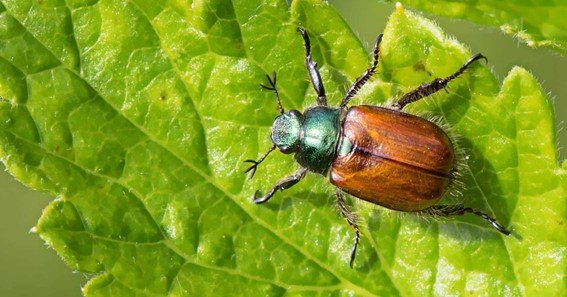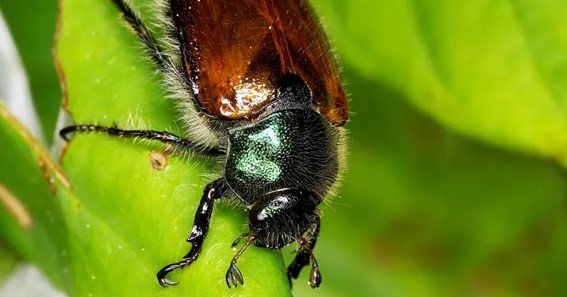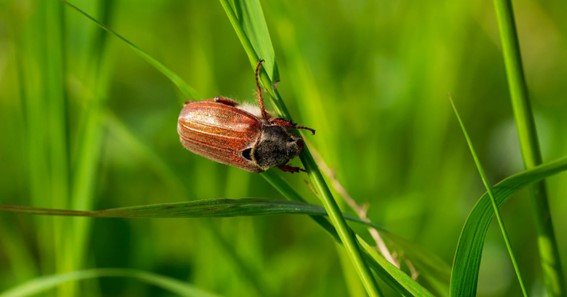What is June Bug Life Cycle? This question intrigues entomologists and gardeners. June bugs, sometimes known as May beetles, are scarab beetles with seasonal appearances and unique life stages. Knowing their life cycle helps us understand their biology and manage their effects on gardens and crops.
June bug life cycles are fascinating. It goes through numerous critical growth changes from egg to adult. This article covers the June Bug Life Cycle, including behavior, effects, and environmental importance.
What is June Bug Life Cycle?
June bugs lay eggs in the ground to start their lives, in late spring or early summer, female June bugs deposit eggs. They prefer nutrient-rich earth, so larvae have food to eat when they hatch. Small oval-shaped white eggs.
Groups are laid out. Eggs become grubs after a few weeks. June bug larvae eat plant roots and soil organic materials at this stage. Growing up, they become adults. June bugs’ longest stage is the grub, which can endure months or years depending on conditions. It is crucial to their growth.
Larval Stage of June Bug

June bugs’ larval stage—grubs—is crucial. They devour plant roots and organic materials at this stage, damaging fields, gardens, and crops. The larvae have brown heads and C-shaped bodies. As they mature, they molt multiple times. This stage provides nutrients and energy for the next stage of development.
Grubs can damage plants during their several-month larval period. While eating, they weaken plants, rendering them ill or vulnerable to animals. Farmers and gardens fear June bugs because they cause so much damage.
To control June bugs, you must understand their larval stage. Gardeners and farmers can prevent June bugs from damaging crops and lawns by recognizing an infestation and applying insecticides or integrated pest control.
Pupil Stage of June Bug
After juvenilehood, June bug grubs pupate into a distinct species. This happens in the ground, where grubs build a pupation chamber. Beetles become adults during this stage. This may take weeks. During the pupal stage, the grub’s body changes drastically into an adult.
The pupae are weak and can’t move, so they take refuge in their underground chamber. When larvae mature, they gain wings, legs, and other features. It affects their bodily structure greatly. June bugs need the pupal stage to adjust to their new environment and prepare for adulthood.
Learn about the complex biological processes that shape insects by studying the pupal stage. Studies of this stage can reveal the complicated processes that govern insect growth and change. This will help them improve June bug control and reduce crop and landscape damage.
Adult Stage of June Bug
In late spring or early summer, adult June bugs emerge from the earth. Beetles learn to fly and mate as adults. June bugs are active at night when it’s warm and come to light. Adults eating leaves, blossoms, and fruits harm plants. Only a few weeks pass in the June bug’s life cycle. Girls lay eggs to restart the cycle, and adults mate.
The June bug’s mature state ensures its survival. Flying helps adults move and settle. They pollinate plants and help transport nutrients as they eat. The brief length of this stage makes it crucial to mate and lay eggs on time to ensure the following generation’s survival.
The June insect life cycle ends when adult June bugs appear. This links their developmental stages. We can better grasp June bugs’ intricate life cycle and environmental impact by understanding the adult stage. This will help us regulate their populations and reduce crop and landscape damage.
Effects on Farming and Gardening

June bugs can impact farming and gardens due to their diet. Many plants can be damaged by juniper bug larvae and adults. Grubs that consume roots can harm or stunt plants. However, mature June bugs can destroy leaves, making plants seem poorer and less valuable.
Controlling and reducing the consequences of the June bug requires understanding its life cycle. Cultural, biological, and chemical therapies and integrated pest management can reduce June bug numbers and damage.
Natural predators and controlling them
June bugs are controlled by several natural enemies. June bugs are consumed by birds, animals, and insects throughout their lives. These natural enemies in fields and farms can reduce June bugs.
Maintaining healthy soil, employing pest-resistant plants, and rotating crops can further reduce June bug invasions. Chemical controls like pesticides should be used sparingly and as a last resort to protect beneficial creatures and the environment. Know the June bug life cycle to control them effectively and permanently.
Importance for the Environment
June bugs, considered pests, are vital to the ecology. Their eggs degrade organic debris in the soil, improving soil health and nutrient cycling. Different species consume adult beetles, keeping their surroundings unique.
June bug life cycles demonstrate ecological complexity with their various stages and interactions with other living things. Knowing how essential June bugs are to the environment helps managers balance their management and ecosystem health.
Conclusion
In conclusion, the June bug life cycle is fascinating, with several stages and unique qualities and roles in the environment. June bugs undergo major changes as they grow from eggs to larvae to pupae to adults to benefit from their environment.
The June bug life cycle helps you learn how they live and find ways to control them so they don’t harm plants and crops. Understanding the complexity of the June Bug Life Cycle helps us get along with them and maintain our environments.
FAQ
What stage does June bugs live?
A June bug’s life cycle can take one to three years, depending on species and environment.
What June bugs’ young eat?
June bug larvae devour soil organic materials and plant roots. Crops and grass can suffer.
How can I stop June bugs from ruining my garden?
Using insecticides intelligently, encouraging natural predators, maintaining soil health, and cultivating resistant plants can help control pests.
Do June bugs harm people?
June bugs do not harm people, but their larvae and adults damage plants and food.
What is June Bug’s nickname?
Their popular name is June Bug Nickname since they appear in June and early summer.
Sources:
https://www.britannica.com/animal/June-beetle
https://study.com/learn/lesson/june-bug-life-cycle-facts-characteristics.html










